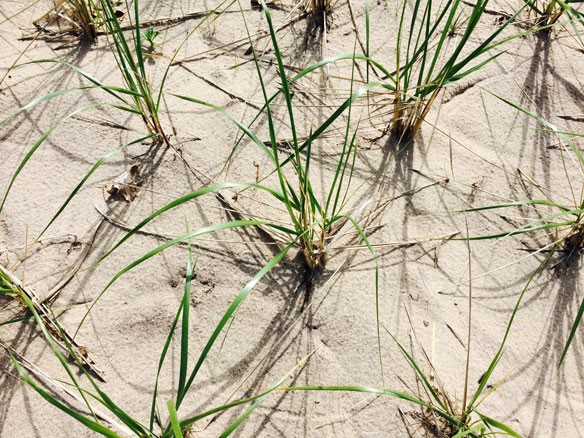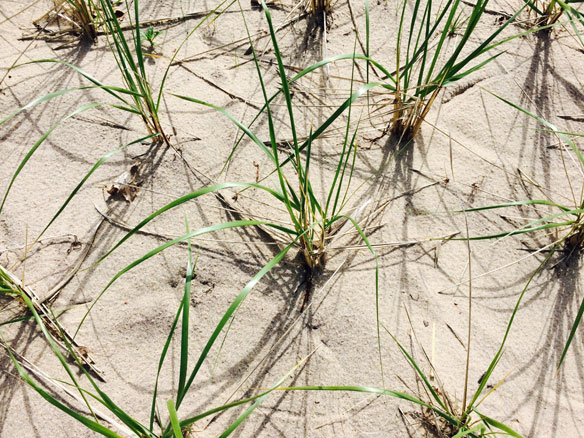
Coastal restoration. Photo source: © SAF — Coastal Care
Excerpts;
Natural and undeveloped beaches should not be armored or modified with “nourishment,” as the sand-sharing system moves deposits from dune to beach in storms and back again. Normally following storms, beach sands are gradually returned to reform dunes…
Read Full Article, The Brunswick News
Beach replenishment may have far reaching impacts on ecosystems;” Phys.Org (03-29-2016)
UC San Diego biologists who examined the biological impact of replenishing eroded beaches with offshore sand found that such beach replenishment efforts could have long-term negative impacts on coastal ecosystems…
Economy Winner, Environment Loser in Renourishment; Pensacola News Journal (12-02-2015)
Editorial: Beach Replenishment is No Cure-All, Asburry Park Press (05-14-2015)
Is Beach Renourishment Worth The Money? WWAY News (02-16-2015)
Piling sand to stop erosion ultimately made the land sink, study says, NOLA (12-26-2015)
Living shorelines a more natural approach to preventing coastal erosion; (05-18-2016)
For centuries, large bulkheads have been used to help control erosion along coastlines. More recent research suggests that a natural approach may be a better alternative. Having nature on your side, especially during a storm or hurricane, is proven to provide better protection from coastal erosion…
NOAA study finds ‘living shorelines’ can lessen climate change’s effects, NOAA (12-22-2015)
“Engineering away our natural defenses: An analysis of shoreline hardening in the US,” A Study by By Rachel K. Pittman, ResearchGate (08-08-2015)
Rapid coastal population growth and development are primary drivers of marine habitat degradation. Although shoreline hardening, a byproduct of development, can accelerate erosion and loss of beaches and tidal wetlands, it is a common practice globally. 22,842 km of continental U.S. shoreline, 14% of the total, has been hardened…
A Fiscal Analysis of Shifting Inlets and Terminal Groins in North Carolina, By Rob Young Director of the Program for the Study of Developed Shorelines at Western Carolina University (01-28-2011)
The debate about terminal groins, shore-perpendicular structures built at inlets in attempt to slow erosion, is worth keeping an eye on, whether you live in western North Carolina or in a coastal community, because it could cost you and our state a pretty penny…
Rethinking Living Shorelines, By Orrin H. Pilkey, Rob Young, Norma Longo, and Andy Coburn;Program for the Study of Developed Shorelines / Western Carolina University, March 1, 2012, Nicholas School of the Environment, Duke University
In response to the detrimental environmental impacts caused by traditional erosion control structures, environmental groups, state and federal resource management agencies, now advocate an approach known as “Living Shorelines”that embraces the use of natural habitat elements such as indigenous vegetation, to stabilize and protect eroding shorelines.
NOAA Study Finds Marshes, Reefs, Beaches Can Enhance Coastal Resilience, NOAA (04-29-2015)
Coastal erosion needs our attention, South Coast Today (01-04-2016)
“North Carolina: The Beaches Are Moving,” A Video featuring Orrin Pilkey, PhD
World famous coastal geologist Orrin H. Pilkey takes us to the beach and explains why erosion has become a problem…









